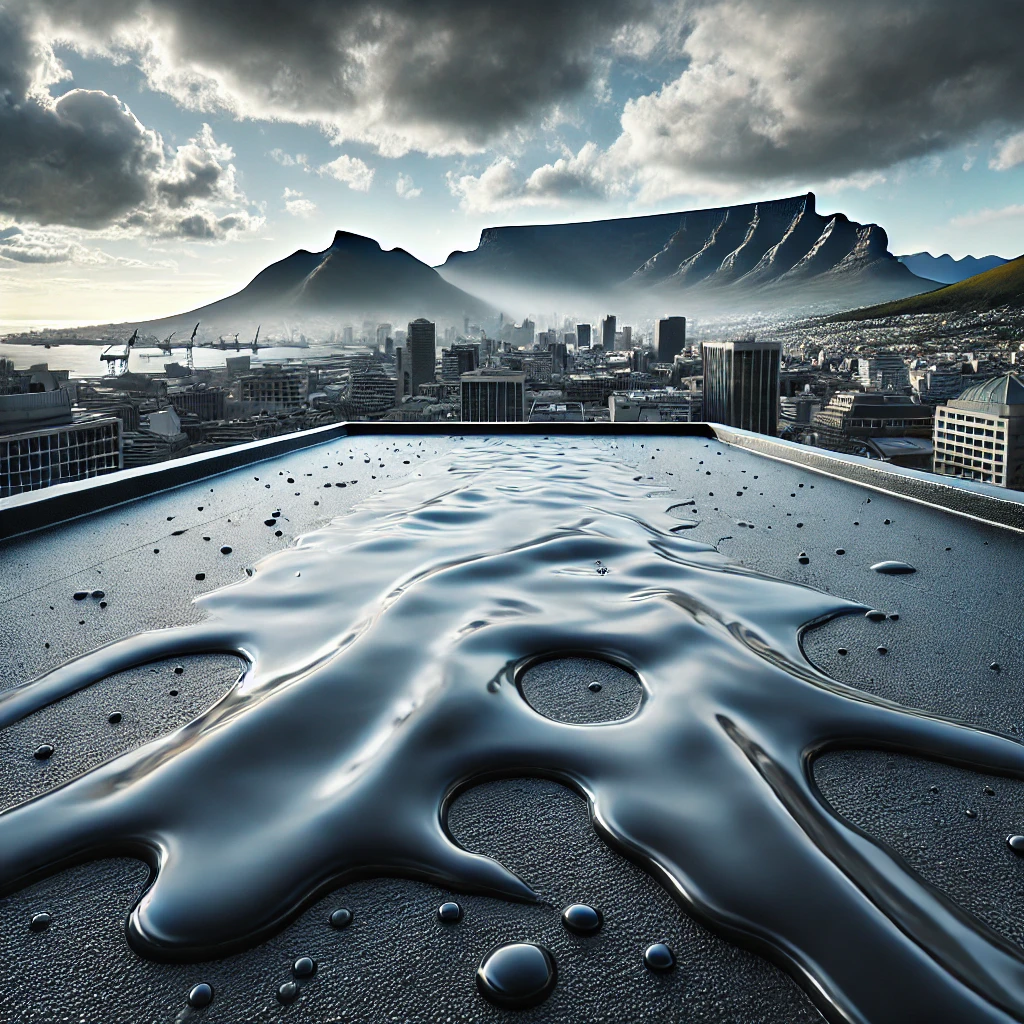
What is Liquid Rubber Waterproofing
Liquid rubber waterproofing is an innovative solution employed to create a resilient barrier against water infiltration in various structures. This method utilizes a specialized polymer-based substance that, when applied, cures into a highly flexible and durable membrane. The composition of liquid rubber waterproofing typically includes a blend of synthetic rubber and reinforcing agents, which facilitate its applications across diverse surfaces such as roofs, foundations, and basements.
One of the fundamental properties that set liquid rubber apart from traditional waterproofing methods, such as tar-based or sheet membranes, is its remarkable elasticity. This characteristic allows liquid rubber to expand and contract in response to environmental changes, significantly reducing the likelihood of cracks and leaks developing over time. Furthermore, its excellent adhesion properties ensure that the waterproofing layer bonds effectively with the underlying substrate, promoting long-lasting protection.
Durability is another crucial aspect of liquid rubber waterproofing. Unlike conventional methods that may degrade or deteriorate under extreme weather conditions, liquid rubber products are designed to withstand UV radiation, extreme temperatures, and even harsh chemicals, making them suitable for both residential and industrial applications. Various types of liquid rubber products are available in the market, catering to specific requirements. For instance, there are liquid rubber coatings intended for use on roofing systems, while others are specifically formulated for use in below-grade applications, such as foundations and retaining walls.
Moreover, liquid rubber waterproofing is environmentally friendly, as many formulations are low in volatile organic compounds (VOCs), making them safer for both users and the surrounding ecosystem. Overall, the combination of flexibility, adhesion, and durability establishes liquid rubber waterproofing as a superior alternative for protecting structures from water damage, ensuring longevity and efficiency in various construction projects.
Benefits of Using Liquid Rubber for Waterproofing
Liquid rubber waterproofing offers a plethora of advantages that make it a preferred choice for homeowners looking for efficient and reliable protective solutions. One of the most significant benefits is its superior flexibility. Unlike traditional waterproofing materials, liquid rubber can expand and contract with temperature variations, ensuring a tight seal that is less likely to crack or peel over time. This characteristic is particularly advantageous in regions with fluctuating climates, where other materials may fail under extreme conditions.
Another remarkable quality of liquid rubber is its resistance to moisture and UV damage. Its waterproof nature ensures that it effectively prevents water infiltration, thereby protecting structures from mold, mildew, and structural damage. Additionally, the UV resistance of liquid rubber means that it can withstand prolonged exposure to sunlight without deteriorating, making it ideal for outdoor applications such as roofs and foundations. This attribute not only enhances the longevity of the waterproofing layer but also contributes to the overall durability of the home.
Ease of application is another compelling factor in favor of liquid rubber. The product can be easily brushed, rolled, or sprayed onto surfaces, making it accessible for both professional contractors and DIY enthusiasts. This straightforward application process reduces labor costs and time, providing significant savings for homeowners. Moreover, the self-leveling properties of liquid rubber allow it to cover uneven surfaces seamlessly.
Lastly, liquid rubber waterproofing is eco-friendly, containing low or zero volatile organic compounds (VOCs). This characteristic makes it a safer choice for both home inhabitants and the environment. Numerous successful applications of liquid rubber emphasize its effectiveness; for instance, many homeowners have reported significant improvements in their basement conditions after using liquid rubber coatings, experiencing reduced leaks and dampness. By integrating these advantages, liquid rubber proves to be a versatile and highly effective solution for waterproofing needs throughout the home.
Step-by-Step Application Process
Applying liquid rubber waterproofing effectively requires careful preparation and attention to detail. The first step is to prepare the surface thoroughly. This involves cleaning the area by removing dirt, debris, and any loose materials. A pressure washer is often the most effective tool for this task. It’s crucial that the surface is completely dry before proceeding, as moisture can affect adhesion.
Once the surface is prepared, inspect for any cracks or defects that need repair. Use a suitable patching compound to fill in these imperfections. Allow the repairs to cure completely as per the manufacturer’s instructions. After ensuring that the surface is in optimal condition, gather the necessary tools, which typically include a roller or brush for application, a mixing paddle, and safety gear such as gloves and masks.
Before application, read the manufacturer’s instructions on the specific liquid rubber product being used. It may require mixing with a hardener or additives. Following these instructions ensures the best performance of the waterproofing membrane. When you are ready to apply, start at one end and work your way to the other. Ensure even coverage by applying the liquid rubber in thin layers, allowing for each layer to dry before applying the next.
Common mistakes to avoid include applying too thick a layer at once, which can lead to improper curing. Additionally, hurried applications can result in an uneven finish. Utilize a brush or roller to smooth out any imperfections during application. After the final layer is applied, ensure the area is kept clean and free of foot traffic during the curing period.
Once cured, regular maintenance is essential. Inspect the waterproofing periodically for any signs of wear or damage, particularly after extreme weather events. Addressing small issues early can prolong the effectiveness of the liquid rubber waterproofing and maintain its integrity over time.
Frequently Asked Questions and Troubleshooting
When considering liquid rubber waterproofing for your home, many homeowners often have questions regarding its application and longevity. One of the most commonly asked questions is about curing times. Generally, liquid rubber can take anywhere from 24 hours to a few days to fully cure, depending on factors such as temperature, humidity, and the thickness of the application. It is essential to ensure that the product has cured completely before exposing it to water to achieve optimal waterproofing performance.
Another frequent inquiry relates to the lifespan of liquid rubber waterproofing. When applied correctly and maintained, liquid rubber can last anywhere from 10 to 20 years. Factors that can influence its durability include exposure to UV light, physical wear, and the surface upon which it is applied. Regular inspections and maintenance can further extend the life of the waterproofing layer, ensuring continued protection against moisture intrusion.
Compatibility with other materials is also a significant concern for many homeowners. Liquid rubber is generally compatible with a wide range of surfaces, including concrete, wood, and metal. However, it is crucial to consult the manufacturer’s guidelines to confirm compatibility with specific materials and coatings. Certain substrates may require a primer or other treatment to facilitate optimal adhesion.
In instances where homeowners encounter issues such as adhesion problems or bubbling, troubleshooting can help identify and resolve the concerns. Adhesion problems may arise from applying liquid rubber to wet or uneven surfaces. To mitigate this, ensure the surface is clean, dry, and properly prepped before application. Bubbling can occur due to trapped moisture; thus, it is advisable to apply the product when environmental conditions are dry. Addressing these issues promptly can enhance the effectiveness of the waterproofing solution and safeguard your home from water damage.

